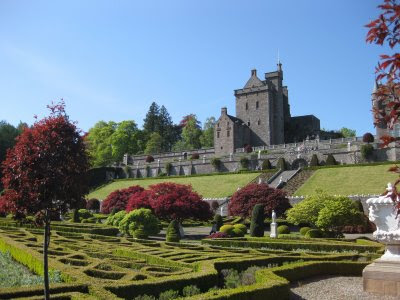 I was there two weeks ago. Looking out on the fine formal terraced gardens it was hard to imagine the despair of brave men contemplating defeat, attainder, life-long exile, the loss of everything that they couldn't carry with them.
I was there two weeks ago. Looking out on the fine formal terraced gardens it was hard to imagine the despair of brave men contemplating defeat, attainder, life-long exile, the loss of everything that they couldn't carry with them. George Keith went on to have a long and varied life. He returned to Scotland from Spain as leader of the 1719 Jacobite rising and later was a roving ambassador for his exiled king. His travels took him to the court of Empress Catherine II of Russia and when that court was purged of foreigners he went to Prussia, eventually becoming Frederick the Great's ambassador to Paris. Here, in 1745, he tried hard (with the benefit of bitter experience) to dissuade Prince Charles Edward from making an attempt at the throne without foreign help.

He retired to a life of intellectual debate and the tending of plants at Frederick's Potsdam Palace, Sans Souci (above). In his eighties he was still writing energetically to friends in Scotland. Ultimately, it seems, he was far more at home amongst the sophistication (and yes, the formal terraced gardens) of Sans Souci than he was in the wave-lashed fortress of Dunnottar Castle which would otherwise have been his inheritance.




























































